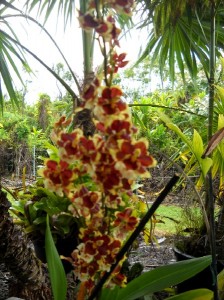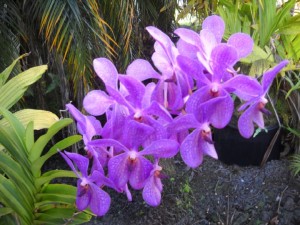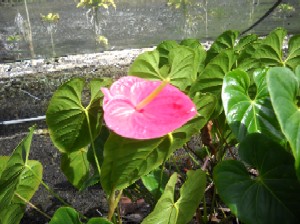Tatsuta Anthurium Picture
This is a picture of one of our Tatsuta anthuriums. Feel free to use this picture on your blog or website. All I ask is that you provide a link back to this web page.
House Plants
How to Avoid Deadly Mistakes with Poisonous House Plants
You might think that choosing a house plant is easy. But you’re wrong. Some house plants are poisonous so you need to be careful about the plants you choose.
House plants can really brighten up your home. They can make any room in your house look better and they also suck carbon dioxide out of the air and in return they provide pure oxygen the stuff that we like to breathe.
But the problem is that some house plants can be poisonous or at least irritating or allergenic to both people and animals. So if you have young children or pets in your home you may want to review the varieties of plants in your home to see if they have the potential to be harmful to pets or children.
A Few Potentially Poisonous House Plants
- Amaryllis
- Angel’s Trumpet
- Angels’ wings
- Azalea
- Croton
- Crown-of-thorns
- Cyclamen
- Devil’s Backbone
- Dumb cane
- English Ivy
- Flamingo lily
- Hydrangea
- Jerusalem Cherry
- Kaffir Lily
- Mums
- Philodendron
- Poinsettia
- Swiss-cheese plant
Now, please keep in mind that this is far from a complete list. If there is any doubt, the responsible thing to do is assume that the plant you are looking at is poisonous. After all, it is better to be safe than sorry. So I urge you to research as much as possible about the plant that you are buying.
Now if you do have children and pets and you want to keep a house plant that is poisonous. You need to make sure that you put your plant in a place that a child or a pet cannot reach it. A high shelf will generally keep things out of reach of a child, but not a cat that loves to climb. A hanging planter or pot may make it tougher for a cat to reach. But please keep in mind that nothing is completely fool proof. Remember, it is better to be safe rather than sorry.
Giving Your House Plants What They Want
All plants require varying amounts of light, nutrients, water and warmth. You need to make sure that you are going to be able to give your house plant what it wants. So if you are deciding on what kind of house plant you want to buy, you should first look for one that is suited to the unique growing conditions inside of your home, before you consider aesthetics or which plant looks the nicest to you.
One of the things to look for in a house plant is light requirements. Most house plants that you buy at the store are selected and bred to enjoy growing with the lower levels of light found inside a home. That is why randomly potting an outdoors plant that needs a lot of sun and bringing it indoors seldom works. But if you are inclined to bring an outdoors plant indoors, make sure you take it out of your house from time to time so that it can catch all the rays that it needs.
Of course you are in full control of water when it comes to house plants, so water requirements are not such a big deal. If you buy a plant that needs a lot of water, you can water it more. If you get a plant that needs little water, water it less. Simple, but don’t forget to water.
Humidity is a factor that is sometimes overlooked. Sure you can adjust the humidity for your plants to a degree, but generally it is easier and more comfortable for you to choose a plant that appreciates the levels of humidity in your home. For example you could buy a plant that requires high humidity, but high humidity might feel uncomfortable for you when the weather gets hot. Furthermore adjusting humidity takes additional effort. If you need more humidity you may need to get a humidifier, while if you need less humidity for your plants you will need to get a dehumidifier.
Temperature is usually easy for most of us to control in our homes. Just turn the dial on our thermostats and presto, the temperature is adjusted according to our desires. But some plants like temperatures that we do not. So pick a plant that is suited to the temperature inside of your home. Fortunately, most house plants are able to adapt to the temperatures that we find comfortable. But there are a few exceptions when you are looking at some of the more exotic house plants or are trying to adapt an outdoor plant to live indoors.
Nutrient requirements of house plants are all over the map. Some plants grow quickly and need a lot of nitrogen, while other plants grow slowly and need little to no additional nitrogen. The nutritional requirements of different varieties of house plants are so variable that you have to do a little research on what your house plant needs. Fortunately there are a number of great resources on the internet. All you have to do is look.
So remember, when it comes to house plants be careful to find out if the variety that you have your heart set on is poisonous, so that you can take appropriate precautions, and also make sure that your home provides a suitable environment for the type of house plants that you are considering.
Midori Anthurium Picture
This is a picture of one of our Midori anthuriums. Feel free to use this picture on your website or share it with your friends on facebook. All I ask is that you include a link back to our website.
Embed Code
Orchid Care
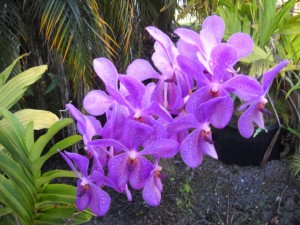 Caring for Orchids
Caring for Orchids
Do you know how to care for your orchids? If you don’t follow these guidelines, you may be risking the life of your orchid plant.
Orchids are one of the most popular plants in the whole wide world and there are hundreds of various varieties of orchid plants. But despite the diversity found in this incredible family of plants, there are a few general guidelines that you should follow regardless of the species of orchid that you are growing. Ignore them at your peril.
Orchid Care Rules
Adhere to these guidelines to help keep your plant in good health. In the event you do not follow these rules, you might harm or perhaps kill your orchid plant.
- Never pot an orchid in regular soil, use orchid potting mix.
- Never let your orchid stay inside a water soaked pot; make sure that the pot drains well.
- When you do water, make certain you use sufficient water that it drains out from the bottom from the pot to prevent a build up of salts.
- Don’t over-fertilize your orchid. Follow the directions on the fertilizer label.
- Watch for pests and remove them by hand or wipe them off having a soft cloth.
- Ensure adequate space in between your plants to stop the spread of orchid diseases between them.
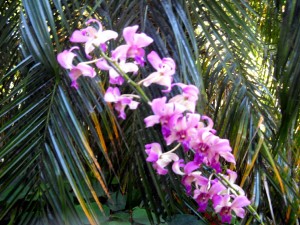 Watering: More Important Than You Think
Watering: More Important Than You Think
Orchids should not be watered too often or you will run the risk of encountering root rot or fungal illnesses. In general, watering once a week is sufficient. You will need to let the media that your orchid is growing in dry in between waterings and you should by no means soak your orchid in water. Its roots need to breathe, so submersing them in water can harm or even kill your plant. You must also mist the leaves and aerial roots of your plant periodically if you live inside a dry area, but avoid getting water on your orchid’s flowers as this can make them rot.
Air Circulation: An Orchid Has to Breathe
Great air circulation is absolutely critical to the well being of your orchid. A frequent cause of fungal infections is poor air circulation. What happens is the air stagnates and water on your plant’s stem and leaves does not dry off as it ought to. When this happens, all sorts of harmful fungus and pests can start to grow and kill your plant.
Temperature: Some Like it Hot
Most orchids favor temperatures in between 65 and 85 degrees. Attempt to help keep them from getting too hot or cold as this can harm or perhaps kill them. They are able to survive brief exposures to temperatures which are outside of this range, but attempt to avoid taking that risk. In the event you do reside in a colder area, attempt to focus on Cymbidium orchids as they are able to withstand colder weather than other varieties of orchids.
Fertilizing: Feeding a Hungry Orchid
Generally you should fertilize your orchid just as it is about to enter its growing season. The growing season starts in the Spring and usually extends to the Fall. As your orchid is growing, its nutritional requirement goes up and so this is the perfect time to feed it. Just look for a fertilizer that is designed for orchids and follow the directions on the label.
Repotting an Orchid
From time to time orchids will need to be repotted, but please bear in mind that the time to repot is often significantly later than many people believe that it is. Orchids appreciate slightly smaller pots than other plants and they also enjoy being slightly root bound, so wait to repot till they’re clearly too big for the pot that they are in. Because there are a lot of orchid lovers out there, most garden shops sell potting mix that’s specially created for orchids. Simply buy orchid potting mix and a slightly bigger pot and repot your orchid in it, using the new potting mix.
Types of Orchids
 There are thousands of different kinds of orchids. In fact, there are over 22 thousand different species of orchids in the world today and many more are still being discovered. But all orchid plants fall into 880 genera or categories. The ten most popular types of orchids are: Cattleya, Phalaenopsis, Vanda, Dendrobium, Paphiopedilum, Oncidium, Miltonia, Phragmipedium, Odontoglossum and Cymbidium orchids.
There are thousands of different kinds of orchids. In fact, there are over 22 thousand different species of orchids in the world today and many more are still being discovered. But all orchid plants fall into 880 genera or categories. The ten most popular types of orchids are: Cattleya, Phalaenopsis, Vanda, Dendrobium, Paphiopedilum, Oncidium, Miltonia, Phragmipedium, Odontoglossum and Cymbidium orchids.
Though my primary focus is anthuriums, I have been known to grow a few orchids from time to time. But I am by no means an expert on orchids. There are so many different species of orchids that I don’t think anyone can be an expert on all of them. I think that true orchid experts tend to specialize on single family of orchids in order to gain deep rather than wide knowledge of these amazing plants.
Phalaenopsis Orchids
Phalaenopsis are also called Moth orchids. They are great orchids for people who are new to growing orchids because they are some of the toughest orchids around. Some orchids are a little on the weak side, but Moth orchids are tougher and they are more tolerant of small mistakes in care.
Vanda Orchids
Vandas are true to their epiphytic nature. They prefer growing free attached to trees rather than having their roots all cramped up in a pot. They seem to like it when their roots can breathe a little oxygen. So grow them on a tree or in a hanging basket if at all possible. Save your bench space for other plants that need it more.
Cattleya Orchids
 Did you know that there are 113 species of Cattleya Orchids?
Did you know that there are 113 species of Cattleya Orchids?
Well that is what you will find, and they all come from South America. They are named for a man named Sir William Cattley who was the very first individual to grow them outside of their native habitat. These lovely orchids generate large, sophisticated flowers and they are a favorite of orchid breeders. Sometimes they can produce flowers which are six inches across.
They come in almost every color imaginable except for the two colors which you by no means wish to see on your skin, black and blue, unless you are wearing these colors.
They have an interesting structure. The number 3 plays a really important function in their composition. They have three narrow petals and 3 broad petals, but one of their broad petals forms what may look like their mouth. But in contrast to us, they don’t use their mouth to eat, it’s just for show.
Cymbidium Orchids
Cymbidium orchids are also referred to as boat orchids. Why? It’s because they look like boats. Not… Actually I don’t have a clue why they are called this.
There is exactly 52 species of cymbidium orchids. This is a fascinating quantity because this is the same quantity of cards which you will find inside a deck of playing cards. All of these species originated in Asia and a few of the bigger species are able to live at high altitudes.
Cymbidiums have a tendency to produce flowers that are slightly smaller than Cattleyas. In fact, their largest flowers have a tendency to be only four inches across. But they do produce a great quantity of flowers. The majority of the time they will generate a minimum of ten flowers or much more.
They’re a better variety for those of you who live in colder climates. They cannot survive freezing temperatures, but they are able to common deal with temperatures down to 45 degrees. Though, we would struggle to locate those temperatures here in Hawaii.
Dendrobium Orchids
Would you believe that dendrobiums are one of the most plentiful species of orchids?
There are roughly 1,200 species of dendrobiums in the planet these days. These stunning orchids original come from Oceania, which is the region encompassing Asia and Australia. Having a family as large as they have, isn’t it apparent that they would need to come from a large part of the globe?
Another fascinating factoid is that their name derives from the Greek words for tree and for life. They are essentially tree-life or plants that prefer to live on trees. The technical term for this really is epiphytes.
Since they come from such a large region, various species of dendrobiums are adapted to various climatic extremes. Some species prefer to develop in dry locations like the deserts of Australia, while other species like the high altitude cold weather from the Himalayas.
Dendrobiums tend to generate little flowers, but they can generate a lot of them. Some plants can produce up to 100 flowers at a time. Like bears they prefer to sleep in the winter time and do the majority of their growing within the summertime. But, in Hawaii, we tend to have endless summers, so they have a really lengthy growing season here.
Miltonia Orchids
Miltonias were discovered by John Lindley in 1837 in the Brazilian Atlantic Forest. They produce large flowers which last a long time on the plant, but not so long when used as a cut flower. They derive their name from Lord Milton who was an early English orchid fanatic. Miltonia are generally medium to large orchid plants and they also produce medium to large orchid flowers from 4 to 15 centimeters wide.
Finally, I realize that I haven’t covered Odontoglossum, Oncidium, Paphiopedilum and Phragmipedium orchids, yet. But don’t worry. I’ll get to them eventually.
Amazon Bestsellers: Orchid Plants and Books
Kona Coffee
Real Kona Coffee or Overpriced Impostor?
Are you buying genuine Kona Coffee or are you getting tricked? Many people think they are buying pure kona coffee but they are being taken for a ride.
There are a number of brands of “kona coffee” that consist of 10% kona coffee beans blended with 90% coffee beans coming from places like South America. Now I am not going to name names of the brands that are doing this, but just look at the label of the “kona coffee” that you are buying. If you are buying a “kona coffee blend” this is usually going to be 10% kona coffee, mixed with coffee from someplace else.
If you want pure kona coffee, you really need to read the label and it should say 100% kona coffee. Then you will know that you are getting the real deal. And if you haven’t had 100% pure kona coffee, I think that you are doing yourself a disservice if you call yourself a coffee connoisseur. I really struggle to come up with the words to describe it. But let’s just say that it is really good. And I urge you not to let a kona coffee blend muddle your experience of pure kona coffee.
Where does Kona Coffee come from?
Kona coffee comes from a very small region on a very small island. Yes, I know that we call this Island the Big Island, but it is very small in the grand scheme of things. It is so tiny in comparison to Australia, which is the biggest island in the world that it is almost hard to spot on a map.
The Big Island of Hawaii is located smack-dab in the middle of the world’s largest ocean: the Pacific Ocean. (As a brief side note, some scientists think that the Pacific Ocean was formed when a massive asteroid hit the Earth and gouged out a huge crater that eventually filled with water. What became of this asteroid and massive chunk of the planet? These same scientists say that it got trapped in the Earth’s gravitational field and became the Moon.)
Kona coffee is grown in what is called the Kona Coffee Belt. The Kona Coffee Belt is a small strip of land at roughly three thousand feet of elevation that runs through the districts of North and South Kona. Sure there are coffee plants grown on other parts of the Big Island of Hawaii and in other parts of the world. But only coffee that is grown in the Kona Coffee belt is allowed to be called Kona Coffee. The Kona Coffee belt is incredibly tiny. It is roughly thirty square miles. Now this might sound like a lot but it really isn’t. And keep in mind that the Kona Coffee belt isn’t packed solid with coffee trees, but it is just the region that Kona Coffee farms are located in. A lot of this area consists of lava, forests and hills that are too steep to collect enough dirt to support coffee plants.
What makes Kona Coffee so Special?
There are a lot of theories as to what makes Kona Coffee special. Some say it is the rich volcanic soil. Others say that it is the warm Kona sun and daily afternoon rain showers.
But for me, it just has an amazing aroma and taste that simply reminds me of home. It is just a really great coffee that I simply do not have the words to describe. You just have to taste and smell it for yourself. But I warn you, it’s easy to get addicted to its sumptuous taste. And your kona coffee habit can get expensive. But I think that it is well worth paying up to get some of the best coffee that money can buy. Don’t you?
Another thing that makes Kona Coffee special is that it is one of the few coffees that are grown in the United States. Sure coffee is grown in Puerto Rico, but Puerto Rico is a United States possession and not a state. At least, it was the last time I checked. So the only coffees produced in the United States are produced in Hawaii. Coffee is grown on some of the other Hawaiian Islands, but so far only Kona Coffee has gained international recognition. But hopefully coffees from other districts and other Hawaii Islands will gain the recognition that they deserve.
Most Kona coffee is grown on small family farms. Some of these farms are being run by the second or even the third generation of family farmers now. And this is another thing that makes kona coffee distinctive. It is not produced by some huge multi-national agri-business conglomerate, but it is produced by people with a deep passion and heritage with growing and producing coffee. A great deal of care is taken by these family farmers to grow their impressive coffees and they tend to take a great deal of pride in producing the freshest product. Beans are quickly, picked and sorted and processed. They aren’t left around to sit a long time after being picked. I’m sure that you can tell the difference that fresh coffee beans make.
Kona Coffee Berry Borer Beetle
The coffee berry borer is a scourge on the Kona coffee industry. The beetle originally came from Africa and it causes more than $500 billion dollars in damage to the world’s coffee crop and it is doing significant damage in Kona too. This pernicious beetle lays its eggs in the berries or fruit of kona coffee trees and when these eggs hatch they produce larva which then proceed to eat the coffee bean, which we kona coffee lovers cherish so dearly.
The coffee beetle causes an enormous amount of damage on the Kona coffee farms of the Big Island and they have made a huge dent in production. And we all know that when dwindling supply meets rising demand prices can go up significantly. So another reason why kona coffee prices are rising is that this coffee beetle is hampering kona coffee supplies, while kona coffee drinkers, like us, still keep on drinking more of this wonderful brew than ever.
Kona Coffee Controversy
Okay, so you’ve read my post and I know that I come across as critical of kona coffee blends.
Am I being too harsh? Or am I being too lenient?
If you are a Kona Coffee grower, do you feel that blends help the overall market or hurt the market for Kona Coffee?
If you are a coffee drinker, do you feel that the labeling of Kona Coffee blends is deceptive or is it fine that blends are marketed the way that they currently are?
I have opened up comments on this post, so feel free to have your say. All I ask is that you keep your comments civil and on topic. Arguing for or against a position on this matter is fine, but ad hominem arguments are not.
Please use the “tweet” or “share” buttons, if you would like to invite your friends to weigh in on this matter.
Anthurium Flowers of Hawaii
Anthurium flowers aren’t native to Hawaii, but they have certainly made themselves at home here in our lush tropical paradise.
If you would like to buy anthurium flowers from Hawaii, please be sure to check out our anthurium flower catalog. But now, let’s get back to our story.
Anthurium Flowers: Where Do They Come From?
Before they decided to make a home for themselves among the volcanoes and beaches of Hawaii, anthuriums grew in the hot, humid rain forests of Central and South America. There they grew undisturbed for thousands of years.
Then one day in 1876 a man who would later become the head gardener of Paris, Edouard Andre, spotted a beautiful plant, while on a botanical expedition in the rain forests of Columbia.
It turned out that this plant was an anthurium plant.
How Did The Anthurium Get To Hawaii?
Edouard sent this magnificent specimen back to Europe and it first landed in Belgium. From Belgium, it was taken to the Kew Royal Botanic Gardens in England, (which claims to be one of the largest gardens in the world, containing one eighth of all the known plant species in the entire world.)
In 1889, Samuel Mills Damon, Hawaii’s Minister of Finance (and also Hawaii’s fourth largest landowner at the time) brought the first anthurium to Hawaii from England. He planted it in the gardens of his estate.
How The Anthurium Flower Developed in Hawaii
In the 1930s and 40s anthuriums spread from Damon’s estate all around Hawaii. Hobbyists began growing anthurium flowers in gardens and even their backyards, under Hapu’u tree ferns or tangerine trees.
The year 1936 was an important year for Hawaii’s anthurium flower industry. This was the year that a red anthurium which came to be known as the Ozaki was found in the garden O. Ozaki in the town of Hilo on the Big Island of Hawaii. At one point in time, the Ozaki was one of the best selling varieties of anthurium flowers from Hawaii.
1946 marked the discovery of a beautiful orange anthurium called the Nitta. It came from the garden of Asako Nitta and some say that is bears a striking resemblance to the original anthurium discovered by Edouard Andre.
In 1950, Haruyuki Kamemoto, returned to Hawaii after finishing his PhD at Cornell and launches the University of Hawaii‘s anthurium research program, which, as we will soon see, has a significant impact on the anthurium industry in Hawaii.
(As a side note, not only did Kamemoto have a huge impact on Hawaii’s anthurium industry, he also made major contributions to Hawaii’s orchid industry as well.)
1963 was another important year. It marked the release of the Uniwai white anthurium and the Marian Seefurth pink anthurium from the University of Hawaii. The Marian Seefurth anthurium was named after the wife of a man who made a very generous donation to the UH to fund anthurium research. These varieties were the first in a string of new anthurium varieties released by the University of Hawaii.
The Mauna Kea anthurium was released in 1977 by the UH. It is a large white and green obake anthurium variety.
In 1988, the first anthurium to be patented, the Starlight, which was developed by Calvin Hayashi, is introduced to Hawaii’s anthurium industry. It produces red flowers that are mottled with white specks. Mr. Hayashi also developed a dazzling green anthurium called the Midori.
In 1993, the University of Hawaii’s first patented anthurium is released. It is the Kalapana anthurium, which is a red and green obake anthurium flower. It is named after the magnificent black sand beach that was destroyed by a lava flow from the Kilauea Volcano.
Anthuriums on Amazon
Here are a few interesting anthurium related items that I saw on Amazon. I get a small commission from Amazon if you buy something through one of my links. The commission helps me to keep this site running and it doesn’t cost you any extra because Amazon already factors it into the price of all of its products.
Anthurium Scherzerianum Plant Care
Scherzerianum (or Pig-Tail Anthurium) are a beautiful breed of anthurium plant that produces red, orange or pink flowers. What sets them apart from Andraeanum is their spadix. They have a curly spadix, rather than a straight one like Andraeanum. Since they are closely related to Andraeanum, Anthurium Scherzerianum Plant Care is really not very different than what is required for Andraeanum.
I suppose that the main difference between the species is that Scherzerianum is a bit better adapted as a houseplant so they are in fact a little easier to care for.
Temperature
The ideal temperature for it is 80 degrees. Ideally, it should not be exposed to temperatures below 60 degrees or above 90 degrees. Temperatures below 60 degrees will hinder growth and flowering, while temperatures above 90 degrees can cause damage to flowers and leaves. Freezing temperatures are to be avoided at all costs, since exposure to frost can be deadly.
Light
Bright, indirect sunlight is best. But direct exposure to midday sun can burn leaves and foliage, so make sure that it is never exposed to strong, direct sunlight. If your plant is near a window with direct sun, cover the window with a thin, filmy curtain to block a portion of the light. If your plant receives too little light, it may stop flowering. A tell-tale sign of insufficient light is a plant that produces a lot of dark green leaves and no flowers.
Potting Soil
Any loose, well drained soil will work well. If you have access to volcanic cinder, you can use it. If not, you can use a mix that has bark, moss and perlite. The key is to make sure that your potting soil drains well. Excessive moisture can cause root rot and other problems that may harm your plant.
Watering
Water your plant regularly, but make sure that the water drains out of the pot quickly. In the rainforest, these plants grow up the side of trees. Despite receiving daily water from rain, their roots are never soaked in water because the water drips down the side of the tree and away from their roots. Since your plant is in a pot, you need to make sure that all of the water drains out of the pot and the potting soil dries slightly, but not completely, before watering again.
Humidity
Humidity should be high, but not excessive. Somewhere around 70 to 80% is ideal. Any higher and fungal issues may occur. Down to 50% is generally fine. But you may want to mist the leaves once and a while. Mist the leaves in the morning and make sure that they dry by the evening to prevent fungal problems. If they don’t dry by the evening, this means that your humidity is more than enough and you don’t need to mist your plants. At this level of humidity good air circulation is essential to prevent the growth of fungus.
Anthurium Plant Problems
Many anthurium plant problems are easily avoidable and can be avoided by following a few simple anthurium care guidelines. Today I am going to talk about the problems that can be caused by giving them too much or too little water, exposing them to incorrect temperature ranges, and providing them too much or too little light.
Watering
Anthurium plants like water but they also like it when their roots can breathe. Water them regularly or they will be stunted or even die. But water them too much and they will experience root rot, have their leaves turn yellow and eventually die.
There are two secrets to watering them.
The first secret involves a lot more work than the second, so it is more prone to resulting in over or under watering. It is to always check the potting media before watering. If it’s soaked, then wait a while before watering. You want to water your plant before the media becomes bone dry and after it is no longer soggy. There should still be a hint of moisture or the roots of your plant will go into shock, and the roots will struggle to absorb water again.
The second secret is to do what we do on the farm, which is to grow them in volcanic cinder. Cinder is a highly porous media that drains exceptionally well. So if you forget to water your plant it probably isn’t the media for you. But it drains so well that your plant can be watered daily without root rot as long as you remember to empty the drip tray that your pot is sitting in. You don’t even have to check if it is soggy; you just wake up in the morning and water your plant. By the following morning the cinder will have dried sufficiently for you to water your plant again, without fear of root rot.
Temperature
Anthuriums like most people don’t like extreme temperatures. Freezing weather will kill them. Hot weather, above 90 degrees, can burn their leaves and damage their flowers. Cold weather below 50 degrees can reduce their rate of growth and cause their leaves to turn yellow. They prefer to be kept at temperatures between 70 to 90 degrees.
Light
Excessive direct sunlight will burn the leaves and flowers of your plant. When left in strong sun, the leaves of your plant will start to turn yellow. If you don’t heed this warning sign, next the leaves will turn brown and die. Anthuriums can tolerate a fair amount of shade, since in their native habitat, they live under the highly shaded canopy of a rain forest, but too little light can cause stunted growth and a decrease in flower production. So if this starts to happen to your plant, give it a little more light.
Private Reserve
Here are pictures of the rarer and more exotic varieties of anthurium plants that we grow on our farm. They are not for sale at the moment, but from time to time we may offer them for sale. When we do sell them, they will only be available in extremely limited quantities.
If you would like to receive notice when we sell these scarce varieties, please make sure that you are on our mailing list.






